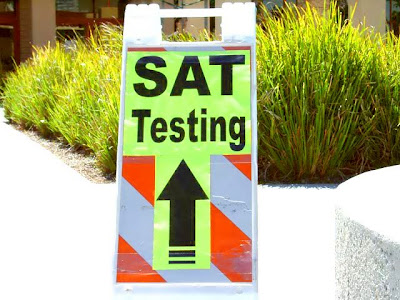Like it or not, reality TV is a significant part of American culture — and Millennial culture, in specific — but many students, parents, and school administrators were not happy when the topic showed up on the SAT test this spring. Students... Read the rest of this post
 Today's guest blogger is veteran Amsco author Henry I. Christ, whose Preparing for the SAT in Critical Reading and Writing has helped students master the SAT for years.
Today's guest blogger is veteran Amsco author Henry I. Christ, whose Preparing for the SAT in Critical Reading and Writing has helped students master the SAT for years.
Applicants who took the SAT 20 years ago, took a test quite different from that of today. My connection with the SAT, or “College Boards,” as the tests were commonly known, began in 1987. This was the date of my first SAT-preparation book. Since then, there have been three later books, copyrighted 1995, 2002, and 2005. Each text prepared students for the test offered at that time. The books provide a survey of the evolution of the SAT. This blog, based on those texts, deals only with the reading and writing tests.
The years since 1987 have seen radical changes, with increasing emphasis on vocabulary and reading. The current test, with the addition of a required writing section, doubles the challenge and provides additional scores for those who take the test.
The changes have not been quixotic. They were based on pretesting, fine tuning, and original research. A comparison of all four tests shows marked changes in content, emphasis, timing, and test strategy.
What was the test like 20 years ago? Of the 85 short-answer questions, 10 were devoted to vocabulary, 25 to antonyms, 20 to analogies, and 30 to reading. What is most surprising is the weight given to antonyms and analogies. Neither appears in the current test. Antonyms were the first to be dropped—in 1995. Analogies held on in 1995 and 2002, but were dropped in the current test.
An official bulletin in 1990 predicted the future. The SAT “will feature longer critical-reading passages with questions based on longer portions of the passages and involving higher critical-reading skills.”
The tests that followed implemented the changes. Reading jumped from 30 to 45 items and remained at that number. Because of the omissions, the overall number of test items decreased, but the reading tests took more time.
What makes the reading test more difficult? Longer passages take more time to read and absorb. Longer paired passages add extra challenges involving comparisons and contrasts. Even the discrete passages, deceptively short and simple, defy quick analysis. The possibilities are endless. Questions may explore the author’s role, attitude, purpose, style, and even diction. Subtleties of figurative language are often tested.
Most dramatic of all changes is the addition of the writing section, with its own tests and scores. Applicants must identify sentence errors, improve sentences and paragraphs, and write an essay based on an excerpt and an assignment.

Preparation for the SAT is hard, but there is often an under-appreciated by-product. The current test covers so many crucial areas of language that a student who does well has abilities to last a lifetime.
Students who own Amsco’s Preparation for the SAT Critical Reading and Writing should keep it as a handbook for life. The SAT should not be a dreaded obstacle in the student’s path, but a refresher course in language.
There are many ways to study for the SAT. None are easy, but all can be productive. The best approach is a long-term investment. The sudden realization that the test date is close can cause panic. Cramming may have some limited value, but the long-term gains are questionable. Preparation for the SAT Critical Reading and Writing may be used as a classroom text over a period of time. Or it may be used independently by a student with enough self-discipline to teach himself or herself. Complete answers and analyses are in back of the book.
To students: keep studying and good luck!
 Today's Ypulse Youth Advisory Board post comes from Akanksha Aurora, a teen in India who is currently facing the universal struggle against standardized tests. Akanksha shares some insight towards what makes the process especially frustrating for... Read the rest of this post
Today's Ypulse Youth Advisory Board post comes from Akanksha Aurora, a teen in India who is currently facing the universal struggle against standardized tests. Akanksha shares some insight towards what makes the process especially frustrating for... Read the rest of this post
I love this. There are few sights sweeter in this world than examining history's predictions of the future. When I was at the ALA Convention in Seattle I had the great luck to stumble upon a party held at the
Science Fiction Museum. This was marvelous, in part, because we got to look at all the exhibits on our own time. So much fun. The museum was to be commended for its vast collection of pulpy sci-fi book covers as well. I suspect these covers by
British illustrator and comics artist Ron Turner would have fit right in.
Thanks to
Drawn for the link.











Bad news...ETS has actually decided to eliminate analogies from the new GRE exam, which will be given as of August, 2011.